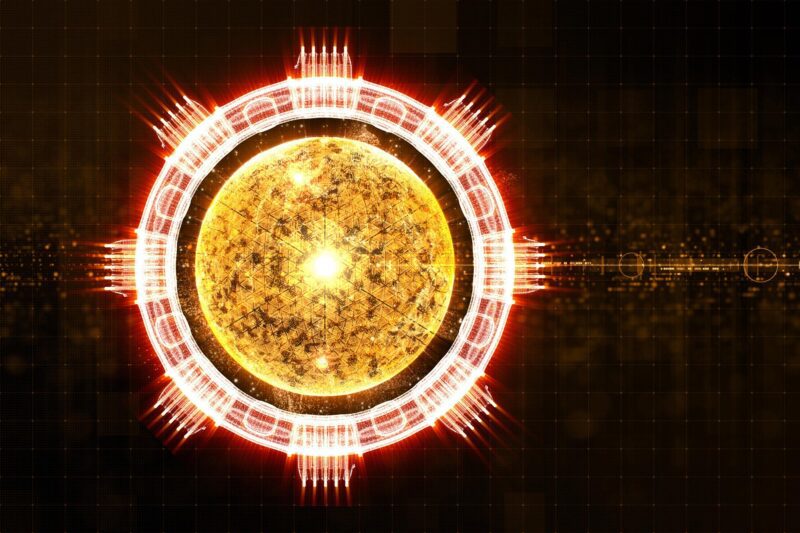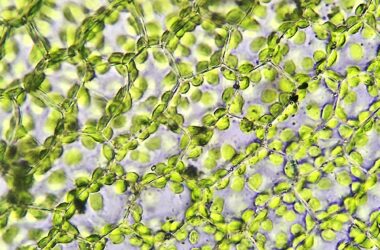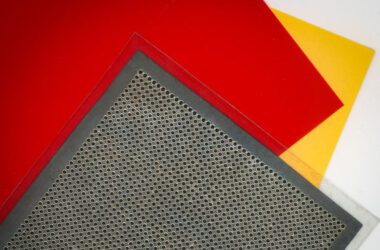Par

Les scientifiques du MIT ont mis au point une méthode permettant à ces capteurs quantiques de détecter n’importe quelle fréquence arbitraire, sans perte de leur capacité à mesurer des caractéristiques à l’échelle nanométrique.
MIT engineers expand the capabilities of these ultrasensitive nanoscale detectors, with potential uses for biological sensing and quantum computing.
With the ability to detect the most minute variations in magnetic or electrical fields, quantum sensors have enabled precision measurements in materials science and fundamental physics. However, these sensors have limited usefulness because they are only been capable of detecting a few specific frequencies of these fields. Now, MIT researchers have developed a method to enable such sensors to detect any arbitrary frequency, with no loss of their ability to measure nanometer-scale features.
The new method is described in a paper published in the journal Physical Review X by graduate student Guoqing Wang, professor of nuclear science and engineering and of physics Paola Cappellaro, and four others at MIT and Lincoln Laboratory. The team has already applied for patent protection for the new method.
Although quantum sensors can take many forms, at their essence they’re systems in which some particles are in such a delicately balanced state that they are affected by even tiny variations in the fields they are exposed to. These can take the form of neutral atoms, trapped ions, and solid-state spins, and research using such sensors has grown rapidly. For example, physicists use them to investigate exotic states of matter, including so-called time crystals and topological phases, while other scientists use them to characterize practical devices such as experimental quantum memory or computation devices. However, many other phenomena of interest span a much broader frequency range than today’s quantum sensors can detect.

MIT researchers have developed a method to enable quantum sensors to detect any arbitrary frequency, with no loss of their ability to measure nanometer-scale features. Quantum sensors detect the most minute variations in magnetic or electrical fields, but until now they have only been capable of detecting a few specific frequencies, limiting their usefulness. Credit: Guoqing Wang
The new system the team devised, which they call a quantum mixer, injects a second frequency into the detector using a beam of microwaves. This converts the frequency of the field being studied into a different frequency — the difference between the original frequency and that of the added signal — which is tuned to the specific frequency that the detector is most sensitive to. This simple process enables the detector to home in on any desired frequency at all, with no loss in the nanoscale spatial resolution of the sensor.
In their experiments, the team used a specific device based on an array of nitrogen-vacancy centers in diamond, a widely used quantum sensing system, and successfully demonstrated the detection of a signal with a frequency of 150 megahertz, using a qubit detector with a frequency of 2.2 gigahertz — a detection that would be impossible without the quantum multiplexer. They then did detailed analyses of the process by deriving a theoretical framework, based on Floquet theory, and testing the numerical predictions of that theory in a series of experiments.
While their tests used this specific system, Wang says, “the same principle can be also applied to any kind of sensors or quantum devices.” The system would be self-contained, with the detector and the source of the second frequency all packaged in a single device.
Wang says that this system could be used, for example, to characterize in detail the performance of a microwave antenna. “It can characterize the distribution of the field [generated by the antenna] avec une résolution à l’échelle nanométrique, donc c’est très prometteur dans cette direction”, dit-il.
Il existe d’autres moyens de modifier la sensibilité à la fréquence de certains capteurs quantiques, mais ils nécessitent l’utilisation de dispositifs de grande taille et de champs magnétiques puissants qui brouillent les détails et empêchent d’atteindre la très haute résolution offerte par le nouveau système. Dans ces systèmes actuels, explique Wang, “il faut utiliser un champ magnétique puissant pour régler le capteur, mais ce champ magnétique peut potentiellement briser les propriétés du matériau quantique, ce qui peut influencer les phénomènes que l’on veut mesurer.”
Selon M. Cappellaro, le système peut ouvrir de nouvelles applications dans le domaine biomédical, car il peut rendre accessible une gamme de fréquences d’activité électrique ou magnétique au niveau d’une seule cellule. Il serait très difficile d’obtenir une résolution utile de ces signaux à l’aide des systèmes actuels de détection quantique, dit-elle. Il pourrait être possible d’utiliser ce système pour détecter les signaux de sortie d’un seul neurone en réponse à un stimulus, par exemple, qui comprend généralement une grande quantité de bruit, rendant ces signaux difficiles à isoler.
Le système pourrait également être utilisé pour caractériser en détail le comportement de matériaux exotiques tels que les matériaux 2D qui sont intensément étudiés pour leurs propriétés électromagnétiques, optiques et physiques.
Dans le cadre des travaux en cours, l’équipe étudie la possibilité de trouver des moyens d’étendre le système afin de pouvoir sonder une gamme de fréquences à la fois, au lieu de cibler une seule fréquence dans le système actuel. Elle continuera également à définir les capacités du système en utilisant des dispositifs de détection quantique plus puissants au Lincoln Laboratory, où sont basés certains membres de l’équipe de recherche.
Référence : “Sensing of Arbitrary-Frequency Fields Using a Quantum Mixer” par Guoqing Wang, Yi-Xiang Liu, Jennifer M. Schloss, Scott T. Alsid, Danielle A. Braje et Paola Cappellaro, 17 juin 2022, Physical Review X.
DOI: 10.1103/PhysRevX.12.021061
L’équipe comprenait Yi-Xiang Liu au MIT et Jennifer Schloss, Scott Alsid et Danielle Braje au Lincoln Laboratory. Ces travaux ont été soutenus par la Defense Advanced Research Projects Agency (DARPA) et Q-Diamond.



